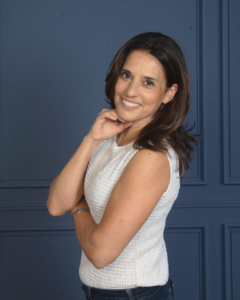Given that I’m a burnout expert and coach, I often get asked about my burnout story. What I’ve come to find out is that people who coach on burnout have come to that calling as a result of experiencing burnout firsthand, recovering, and then wanting to help others avoid their pitfall.
While this Hero’s Journey is quite normal and admirable, it’s not my story at all. In fact, what makes my journey quite unique is that I’ve avoided burnout altogether.
I am, no doubt, a high achiever – someone who could have easily burnt out as a result of focusing on my career. I could have burnt out as an entrepreneur, working solo in a therapy practice for years…but I didn’t.
I’m here to tell my story of burnout prevention in an effort to inspire you to rethink your work-life paradigm. Perhaps I can inspire you to avoid burnout rather than simply recover from it. But before I do, consider your current situation.
Rethink Your Paradigm
Are you driven to be the top of your class, best in your field, numero uno at work? If so, it might lead to great accomplishments, but also keep you stuck in drive.
I recently read a book called Relentless which was written by the guy who trained all the biggest super athletes, including Michael Jordan.
When you’re that focused, determined, and driven, you might get to be number one in the world. But before you pursue that path, consider what you are willing to sacrifice. No one can achieve great feats on their own. Even if you’re all in on your goal, your decision has an impact on other people in your life. If you’re Michael Jordan, this only works as long as your wife’s willing to stay with you despite the fact that you’re hardly ever around and as long as your friends are forgiving that you don’t have time for them.
There are very few people who are that highly driven to live a life so unbalanced to the extreme. They are the exception, not the rule. That said, thank goodness there are people like Michael Jordan in the world because his accomplishments are so inspiring and we need somebody like that to look up to.
If we’re honest, this sort of lifestyle is probably not for you and me. It’s probably not for most people. The important thing is not to kid yourself. If you want solid relationships, if you care about your mental and physical health, or if you’re just not willing to sacrifice everything for the one thing and work harder than everybody else, then this is not for you.
When I was writing my book, The 7E Solution to Burnout, I interviewed some of the lawyers who work in the top firms in the world. These partners make millions of dollars a year. Yes, they are super successful…but at what price?
Apparently, for three million dollars, you get to go through a divorce from your spouse, live alone, and spend nights and weekends at the office. You try to socialize with your clients, which is incredibly complicated because not everyone can have a dual relationship and be alright with it.
Or if both of the partners are in the biz, you hire one aupair to take your kids to school in the morning and one to bring them home in the afternoon. You spend all your time working and have the hired help raise your children. Yes, you have more money than most people. But is this the life you want to live? Is work the only thing that really matters to you?
It Starts With Your Values
When left unexamined, it’s easy to get swept up by societal norms and peer pressure. You see everyone around you working hard, so you work just as hard if not harder, depending on how competitive you are.
Rather than letting other people’s actions dictate your own, take a step back. Consider what truly matters to you. If you’re a super high achiever, why is achievement so important? What does it mean to achieve less than others or to slow down? You’ll find that asking these questions can help you have more insight into what’s driving you from within and that’s how you can start tapping into your values.
I credit my number one value, lifestyle, with the reason for my burnout prevention. From a very young age, I thought about the importance of doing work that was meaningful but also living a full life. It wasn’t easy to figure out how to fill in all the blanks and I found that it took a lot of contemplation, future projections, and planning to make it work for me.
Before I landed on psychology as a profession, I considered my options. What ultimately drew me to the field was the diversity of jobs I could have as a psychologist. If I want to live life on my terms, I need a career that’s flexible. That was step one.
After I reached a ceiling working for a nonprofit organization, I had to decide on next steps. I considered my options but didn’t like any of them. I realized that if what I want doesn’t exist, I need to create it.
But I hesitated. I knew that being an entrepreneur came with a greater risk of burnout. I’d be working on my own, seeing client after client. If I wasn’t careful, I’d end up a statistic.
So I set up my practice around my most essential value. I needed to consider the lifestyle I was after before diving into the work. I rented an office walking distance from my gym so I could go workout in the middle of the day. This helped me avoid the issue of not having time to exercise after work.
I set my hours in such a way that I avoided working nights or weekends. In addition, I clustered my client appointments. Rather than seeing them without a break all day and then staying late to do my paperwork or taking that work home, I saw three to four clients back to back and then immediately completed all the paperwork while the information was fresh in my mind.
It was also important for me to continue to provide value to my clients so I would spend some of that time thinking about our work and next steps, researching resources for them, and emailing those to them so they could implement new thinking or behavioral methods outside of the session. That kept the momentum going for us both and helped me remain engaged in the process, a crucial component for me for burnout prevention.
Even if you’re not an entrepreneur who can call all the shots around where and when you work, there is a lot you do have control over to create more balance in your life.
What is Balance?
Many people are allergic to the word balance these days because they think it means a 50/50 split between work and life, which is unattainable given the number of hours you spend on the job.
Balance doesn’t mean one thing. In fact, it’s very subjective. What feels balanced for a super high achiever like Michael Jordan might feel completely lopsided for you so it’s important to avoid comparing yourself to others.
Start with where you’re at right now. Here are some questions to contemplate:
- How many hours do you work?
- Does it feel like too much? You would know it’s unbalanced if you feel exhausted, resentful, overwhelmed, burned out or if you simply have too little time for other priorities outside of work.
- Do you get adequate rest or are you always sleep deprived?
- Do you spend adequate time engaged in self-care?
You may be out of balance at the moment, but there are many different ways to rebalance the equation.
I often get asked about my self-care practices for avoiding burnout. As I share this, please keep in mind that there is no set formula for self-care. You may have something that works for a while and then you shift it. What may work for others may not work for you. If someone else’s version of self-care doesn’t resonate with you, do something else, but do something.
Since moving to South Florida, I have had the good fortune to start my day by swimming laps. We have access to sunshine year round and to an outdoor pool that’s walking distance from my house. It’s a great way to get light exposure first thing in the morning and get my exercise on. After I come home, I shower and meditate before starting work.
At this point, you might be thinking, “I don’t have time to do all this stuff. I’ve got hundreds of emails to comb through, projects to finish, and meetings to attend.”
I get that everyone’s so busy. It’s part of our culture. But the question you should be asking yourself is whether you are able to be present to do quality work. You see, as a mother of two children under the age of 13 and a business owner, I too am busy.
These practices actually help me be hyper focused when I settle into work. They help me get in the zone. In order for me to sustain that level of focus, I need to have certain things built in that allow me to lead a healthy lifestyle.
For me, balance means having a cut off time for work so I can spend time with my family. Every night I cook and we sit together for a family dinner. When the kids go to sleep, I either have alone time or spend time with my husband. One night a week I go dancing with a friend. These habits are nothing fancy. Remember, it’s the little things that make the big difference.
Creating Yin Alongside Yang
If you’re unfamiliar with the concept of yin and yang, it’s about two opposites completing each other. We often think about this in relationships, especially when the partners are quite different. When one of the partners is extroverted and the other is introverted, we can understand how they balance each other out. An extreme lack of balance might be two extroverts talking over each other or two introverts not talking at all.
The same can be said about how we spend our energy. We have a tendency to focus on doing, but we need at least some down time to focus on being.
When people say they don’t have time to meditate, they are simply not prioritizing yin. For years, I approached exercise in this way. I’d practice vinyasa yoga, which helped me get a great workout. But every time I’d see a massage therapist for my tense muscles, they’d tell me I need to stretch. My thinking was that I don’t have time to stretch. I do yoga. Isn’t that enough?
It turns out that even in yoga, there is a balanced way to practice. Vinyasa is one of those yogas that’s considered yang. It’s action-oriented.
There is also a practice called Yin Yoga which focuses on stretching and holding those stretches for extended periods of time. This helps you go deeper without exerting much effort. This practice has its physical benefits of increasing circulation and flexibility. Just as importantly, it is an opportunity to work on inner silence. You become aware of the tension and rather than power through it with movement and strength, you focus on breathing into it. You simply melt. In a good way.
Think about how you spend your day and how you show up in your relationships. If you work for hours on end, put yourself on the back burner, take on more than you can chew, and try to get your needs met from the outside, you’re in yang.
Yin activities would include meditation, breath work, napping, sleeping, and moving with the momentum rather than creating the momentum. It’s about surrendering and accepting things outside of your control. It’s about careful contemplation rather than impulsive action. It’s about responding rather than reacting.
How can you introduce more yin to your life?
The Problem With Being Told to Create Work-Life Balance
Whenever I read burnout articles, the message is clear. When you get out of balance, you suffer. You can only take too much before the scales get tipped.
The problem is the so-called experts all say the same thing: Create more work-life balance.
We get it. It’s the right thing to do. It’s helpful. But is anyone telling us how to do it?
Here are three steps to creating work-life balance:
1. WHAT: You have to decide for yourself what balance looks like for you. A great way to determine that is to look at what you’re doing too much of and what you don’t have time for that you’d like to incorporate into your schedule.
2. WHY: Why would creating more balance be meaningful to you? Perhaps it would allow you to do more meaningful work, spend more time with the people you care about, or take care of your health.
3. HOW: Once you have some clarity about what balance looks like and why it’s important, make a list of the different scenarios you’d like to try. It’s nearly impossible to implement all the items on your list all at once, so start with one thing. Maybe you start implementing 15 minute breaks twice a day during work. Do that for a week and see how you feel. Is it worth keeping? Do you feel differently? If yes, great! Keep doing it and look to introduce another small change into your day. If it’s not beneficial, go back to the drawing board. Find something else you want to experiment with and see how that goes. Over time, you’ll figure this out.
—————————-
If you’re burning out, download the Burnout Checklist to see which stage you are in and what you need to focus on to recover. Go to: www.drsharongrossman.com/burnoutchecklist
Author



Recent Comments